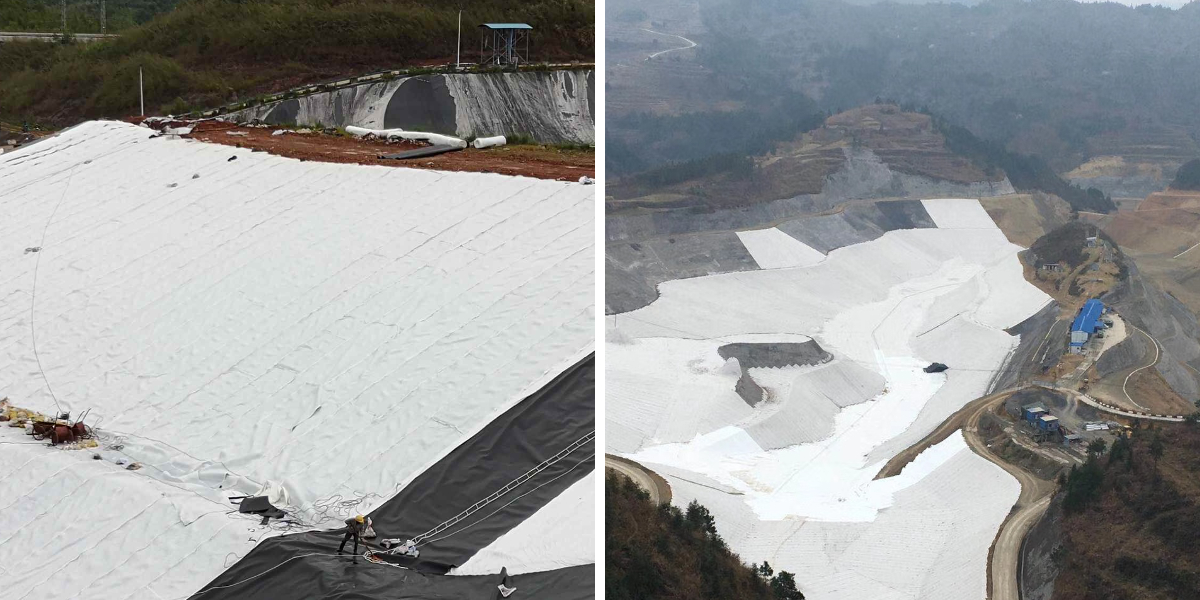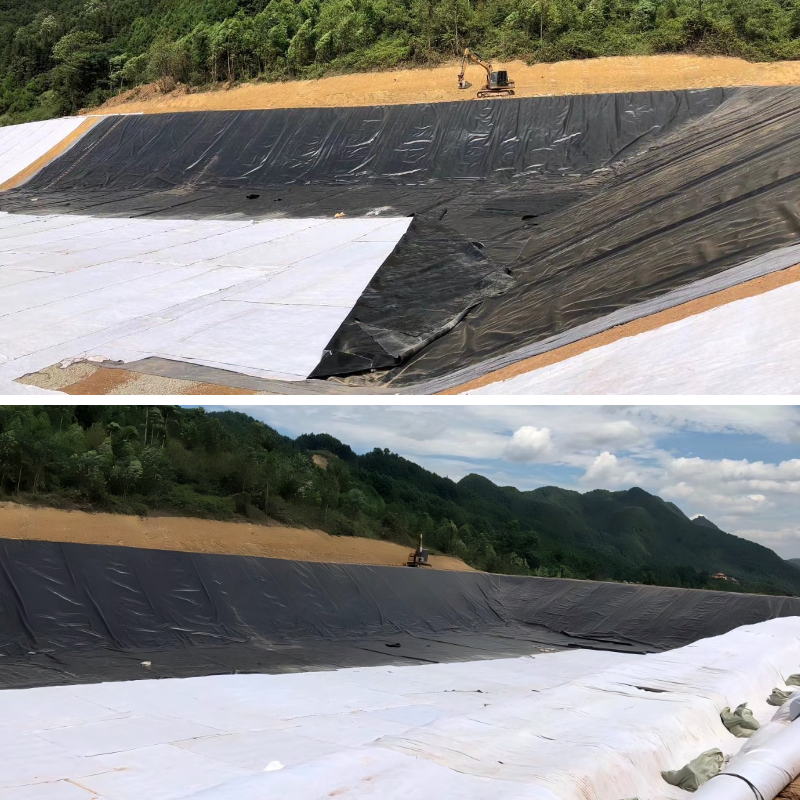Common Mistakes to Avoid When Using Geotextile Cloth for Construction
Geotextile cloth—often referred to interchangeably as geotextile or geofabric—is a workhorse fabric in cutting-edge construction. It reinforces soil, improves drainage, prevents erosion, and separates specific development layers, making it indispensable for tasks like roads, preserving walls, landfills, and landscaping. However, even the highest-quality geotextile material fails if used incorrectly. Below are 4 quintessential errors building groups frequently make, alongside with actionable options to make sure your geotextile setup grants long-lasting results.
1. Choosing the Wrong Geotextile Type for Your Project
Not all geotextile fabric is created equal—and deciding on a kind mismatched to your project’s wants is one of the most costly errors. Geotextiles are greatly classified into two primary types: woven and non-woven. Each has special houses that make it appropriate for precise tasks, and mixing them up undermines performance.
Why This Mistake Happens
Many groups choose for the most inexpensive geotextile or a kind they’ve used before, besides thinking about the project’s core necessities (e.g., load-bearing, drainage, or filtration); for example, a non-woven geotextile would possibly appear versatile, however it lacks the tensile electricity wished for heavy-duty functions like street base reinforcement.
Consequences of Mismatched Geotextile
Using woven geotextile for filtration leads to clogging, standing water, and soil erosion due to the fact its tight, structured fibers avoid water flow, whilst the usage of non-woven geotextile for reinforcement motives stretching, tearing, or give way beneath heavy masses (e.g., toll road subgrades) due to the fact that it’s smooth and porous, requiring luxurious rework.
How to Avoid It
First, outline your main goal—whether you want geotextile material for reinforcement, drainage, filtration, or separation (reinforcement desires woven geotextile, whilst filtration/drainage calls for non-woven)—then take a look at the geotextile’s tensile strength, permeability rate, and UV resistance (ensuring UV remedy for outside initiatives to stop speedy degradation), and sooner or later seek advice from a geotextile producer with venture important points (e.g., soil type, load capacity, climate) to get suggestions for the proper type, like a needle-punched geofabric if needed.
2. Ignoring Soil and Environmental Compatibility
Geotextile fabric interacts immediately with soil, water, and neighborhood weather—and ignoring these elements leads to untimely failure. Even the proper geotextile will degrade or underperform if it’s no longer well suited with the surroundings it’s established in.
Why This Mistake Happens
Teams regularly focal point on the geotextile’s specs however neglect the soil’s houses (e.g., pH, salinity, or particle size) or neighborhood prerequisites (e.g., heavy rainfall, severe temperatures); for instance, acidic soil is frequent in pine wooded area areas, however few reflect onconsideration on how it reacts with artificial geotextiles.
Consequences of Incompatibility
Acidic or alkaline soil breaks down the fibers of artificial geotextile (e.g., polyester or polypropylene) over time, shortening a 10-year lifespan to 2–3 years and inflicting layer separation or erosion; geofabric with too-large pores lets satisfactory silty or clay-heavy soil particles skip through, clogging drainage structures and main to water pooling that weakens soil structure; and unprotected geotextile material in sunny, arid areas loses up to 50% of its electricity in a year, which is catastrophic for tasks like preserving partitions that depend on geotextile reinforcement.
How to Avoid It
Conduct a soil check earlier than buying geotextile to take a look at pH, salinity, and particle size—choosing chemically resistant geotextile (e.g., polypropylene) for acidic/alkaline soil and non-woven geofabric with a tight pore shape for nice soils—account for local weather through prioritizing high-permeability geotextile material in moist areas and UV-stabilized geotextile (labeled “UV-resistant” or “10+ yr out of doors lifespan”) in sunny regions, and think about groundwater by means of the usage of microbial-resistant geotextile close to groundwater or wetlands to keep away from injury from micro organism that spoil down herbal fibers like jute geotextile.
3. Improper Installation: Tension, Seams, and Coverage Errors
Even the first-rate geotextile fabric fails if mounted poorly. Installation mistakes—like mistaken tension, shoddy seam work, or insufficient coverage—undermine the material’s potential to function its core functions.
Why This Mistake Happens
Installation is frequently rushed to meet closing dates or achieved by way of unskilled labor unfamiliar with geotextile high-quality practices; for example, a crew would possibly stretch the geotextile too tight to “save time” barring realizing this weakens the fibers.
Common Installation Errors and Their Consequences
Over-tensioning geotextile fabric reasons fibers to snap or weaken, making it unable to flex throughout soil shifts (e.g., freeze-thaw cycles) and main to tears, whilst under-tensioning lets it bunch up underneath subsequent layers (e.g., gravel or asphalt), developing uneven surfaces and gaps for soil mixing that defeats separation purposes; negative seam work—like insufficient gluing or less than 6–12 inches of overlap—lets water and soil seep through, inflicting layer mixing or drainage failure; and ignoring sharp objects (rocks, roots, debris) underneath the geotextile leads to punctures, which let soil particles omit thru and clog drains or decrease reinforcement.
How to Avoid It
Follow the manufacturer’s guidelines for geotextile fabric installation, such as encouraged anxiety (using a anxiety meter for consistency) and seam overlap, and educate your group to adhere to them; put together the subgrade by way of clearing rocks, roots, and debris, raking the soil smooth, and including a skinny sand layer if wished to guard the geofabric from punctures; use acceptable seam techniques—heat welding or stitching for woven geotextiles (instead of simply glue) and at least 12 inches of overlap plus heavy-duty staples or geotextile-specific adhesive for non-woven ones; and have a supervisor look at every area of established geotextile earlier than including the subsequent layer, searching for tears, free seams, or punctures and repairing them without delay with geotextile patches.
4. Neglecting Post-Installation Maintenance and Monitoring
Geotextile material isn’t a “set-it-and-forget-it” material. Once installed, it wishes everyday exams to make sure it’s nonetheless performing. Neglecting renovation leads to small problems (e.g., a tiny tear) turning into important disasters (e.g., street subsidence).
Why This Mistake Happens
Many groups view geotextile as a “hidden” material—once blanketed by way of soil, gravel, or asphalt, it’s out of sight and out of mind—and count on it will ultimate indefinitely besides monitoring.
Consequences of Poor Maintenance
A small tear in the geotextile fabric can amplify over time as water and soil ignore through, which in quintessential initiatives like landfill liner structures can lead to poisonous leachate seeping into groundwater, ensuing in environmental fines and expensive cleanup; non-woven geotextile used for filtration can clog with sediment if unchecked, stopping water glide and inflicting standing water that weakens soil and damages buildings like protecting walls; and uncovered components of the geotextile (e.g., edges close to development boundaries) can also go through UV degradation, and except periodic checks, you won’t be aware fraying till the geofabric is already damaged.
How to Avoid It
Schedule everyday inspections of the geotextile cloth—at least twice a year, and extra regularly if the region has heavy rain, flooding, or close by construction—and use drones or soil moisture sensors for hidden sections in indispensable tasks (e.g., landfills); easy the geofabric when clogged (e.g., in drainage ditches) through gently rinsing with low-pressure water to put off sediment, warding off high-pressure washers that harm fibers; and restore injury immediately—fix small tears with geotextile patches (cut to 6 inches large than the damage) and adhesive, and change whole sections for massive harm as a substitute of “patching over” sizable issues.
Conclusion: Get the Most Out of Your Geotextile Cloth
Avoiding these 4 errors ensures your geotextile cloth, geotextile, or geofabric gives you on its promise—saving you time, money, and headaches. By deciding on the proper type, matching it to your soil and climate, putting in it correctly, and preserving it regularly, you’ll increase your project’s sturdiness and long-term performance.
Whether you’re constructing a residential driveway or a industrial highway, geotextile fabric is an investment—treat it as such, and it will shield your undertaking for years to come.
Contact Us
Company Name: Shandong Chuangwei New Materials Co., LTD
Contact Person :Jaden Sylvan
Contact Number :+86 19305485668
WhatsApp:+86 19305485668
Enterprise Email: cggeosynthetics@gmail.com
Enterprise Address: Entrepreneurship Park, Dayue District, Tai 'an City,
Shandong Province









